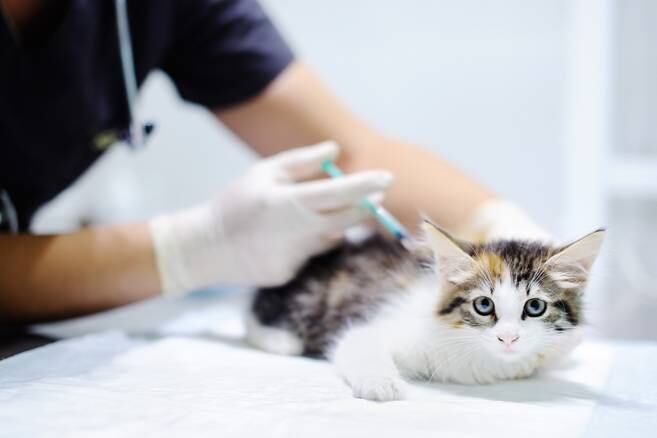
I am told that it is very unpopular among baby boomers, that younger pet owners adhere to it more willingly. I'm somewhere between the two, you know, but I'm moving towards a form of openness.
For my first column, I spoke with animal owners, a veterinarian, a distributor, an industry representative and an acquaintance of the sector, I learned almost nothing from it. I hate waste, you have no idea. Hence the idea of recovering unused material for a second part.
First, I was surprised by the number of people around me who pay for such insurance. It is said that in Canada, only 1% of pets benefit from protection. Although several sources have repeated it to me, the origin of this data remains nebulous.
At CAA-Quebec, which distributes Pet Plus US products at a discount, we add that more than 30% of animals are covered in the United Kingdom, a rate which approaches 50% in Sweden. There, this type of insurance has been established for a longer time and would have become common practice, which is not yet the case here, even if we observe growing popularity for this financial product.
Over the past five years, the number of pets insured has increased by 87% in Canada, and premiums paid have jumped by 108% during this time, according to the North American Pet Health Insurance Association (NAPHIA). It increases every year.
A colleague purchased protection for Enzo, her long-haired domestic cat. This is the exception in my circle, because it is mainly dog owners who take out insurance, which is confirmed by NAPHIA.
For every insured feline, three dogs would benefit from coverage. Last year, more than half a million pets were insured in the country, including 117,000 cats.
There are three main players in the industry: Petline, Pets Plus US and Trupanion, the first two are Canadian, the third is American. Their insurance products may have different names depending on the distribution channel. Petsecure insurance, for example, is owned by Petline.
I'm going to ramble a little, I'm not very young anymore either. Insurance is used to cover the costs of veterinary care, as you know, and the protection is more or less broad depending on the options chosen: accident only; accident and illness; accident, illness and preventive care.
For “accident and illness” insurance, cat owners paid on average premiums of $427 in 2022, it is double for dog owners ($813). Do not be fooled by these amounts, premiums vary considerably depending on the breed of the animal, the deductible, the amount of coinsurance, the treatments reimbursed and the annual ceilings.
Products are difficult to compare. At Petsecure (Petline), for example, the extent of cover varies according to four levels, but it always includes “accident and illness” insurance. The top level, with the most extensive “accident and illness” coverage, includes preventive care.
At Pet Plus US, we also have several ranges, but you can subscribe to insurance that only covers accidents.
At Trupanion, we do not offer preventive care. A good acquaintance who works in the field tells me that veterinarians most often insure their own animals with Trupanion, among other things because they do not want to pay for prevention. We understand, they can take care of it themselves.
It's also not the most useful for the ordinary customer. Preventive care is recurring, everyone who chooses this option will logically use it. The insurer will charge them in its premium. Rather than paying the veterinarian directly, pet owners go through the insurer, with the administration costs associated with all these formalities.
I've already mentioned it: pet insurance is expensive. Too expensive? Like anything, everything depends on means, other consumption choices (priorities), and the state of finances in general.
You should first save enough and have good coverage for yourself (life insurance, disability insurance) before insuring your dog, or even adopting an animal. That's the principle. Here too, I repeat myself.
We also need to understand what we are buying. The least expensive products offer limited coverage. You can thus pay premiums for years for a policy that will prove useless at the first bad diagnosis.
During my morning walk, I often come across my former colleague Simon walking his Portuguese Water Dog. I was surprised to learn that he had taken out insurance for his energetic curly companion. Recently, a tumor was detected in the latter.
Despite the protection, its owners will have to pay $4,000 out of their own pocket to have the animal treated. The former colleague had purchased a basic product that only covered a small fraction of the care.
I am not saying that you should subscribe to high-end protection, I am only pointing out that you may have to resign yourself to euthanasia despite purchasing insurance.
This will not be the case for the Portuguese Water Dog, its owners have the means, but they will have to cut elsewhere or work overtime.
Are veterinarian fees exaggerated? This is the question that arises when we deal with the subject. The level of veterinary medicine is not far behind that of human medicine, and since we pay nothing for treatment, we tend to forget what it costs. Equipment, materials, staff, medicines, rents, it’s still not cheap. Neither does expertise, a veterinarian still wore out his pants for five years at university.
Within a five kilometer radius of my home, I have eight clinics, including a few independent practices. It would be surprising if all these people colluded to influence prices.
When a serious diagnosis comes, it's always the same problem for veterinarians: how to present the situation, the treatments and their costs. This often gives rise to pathetic scenes, anger, tears or very down-to-earth dilemmas: the trip or the dog?
I understand the insurance bias of animal doctors.




